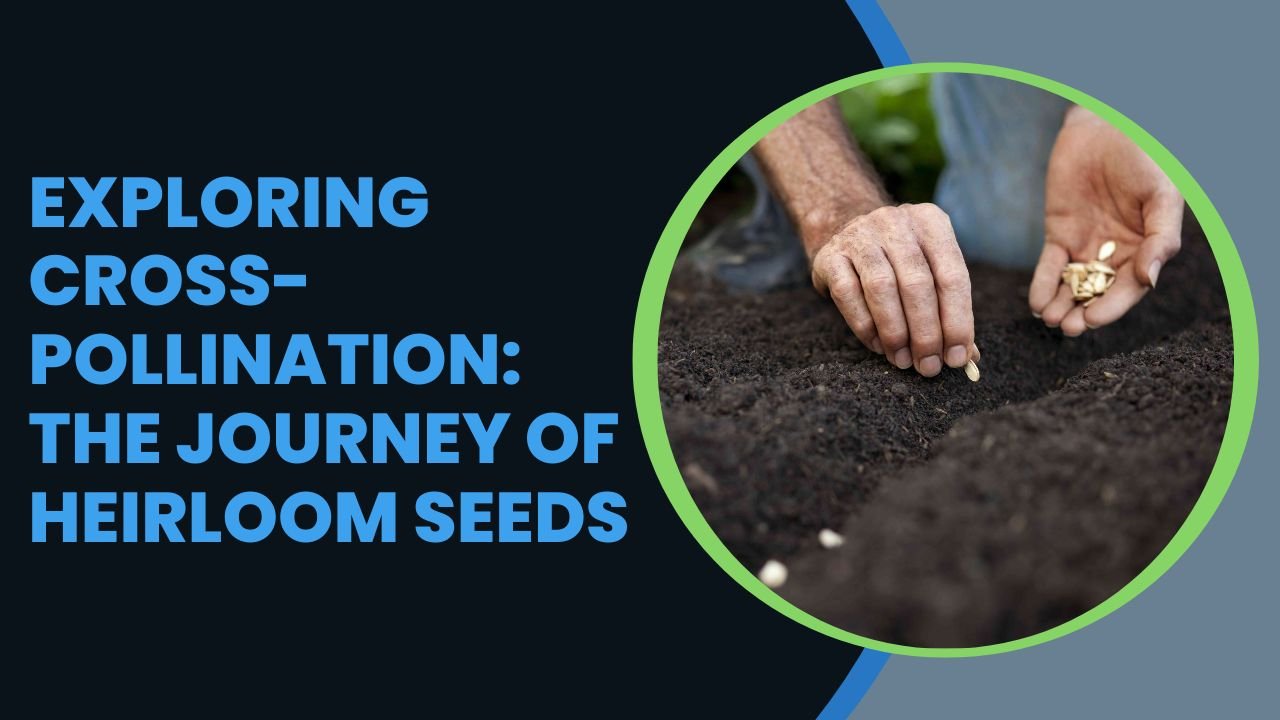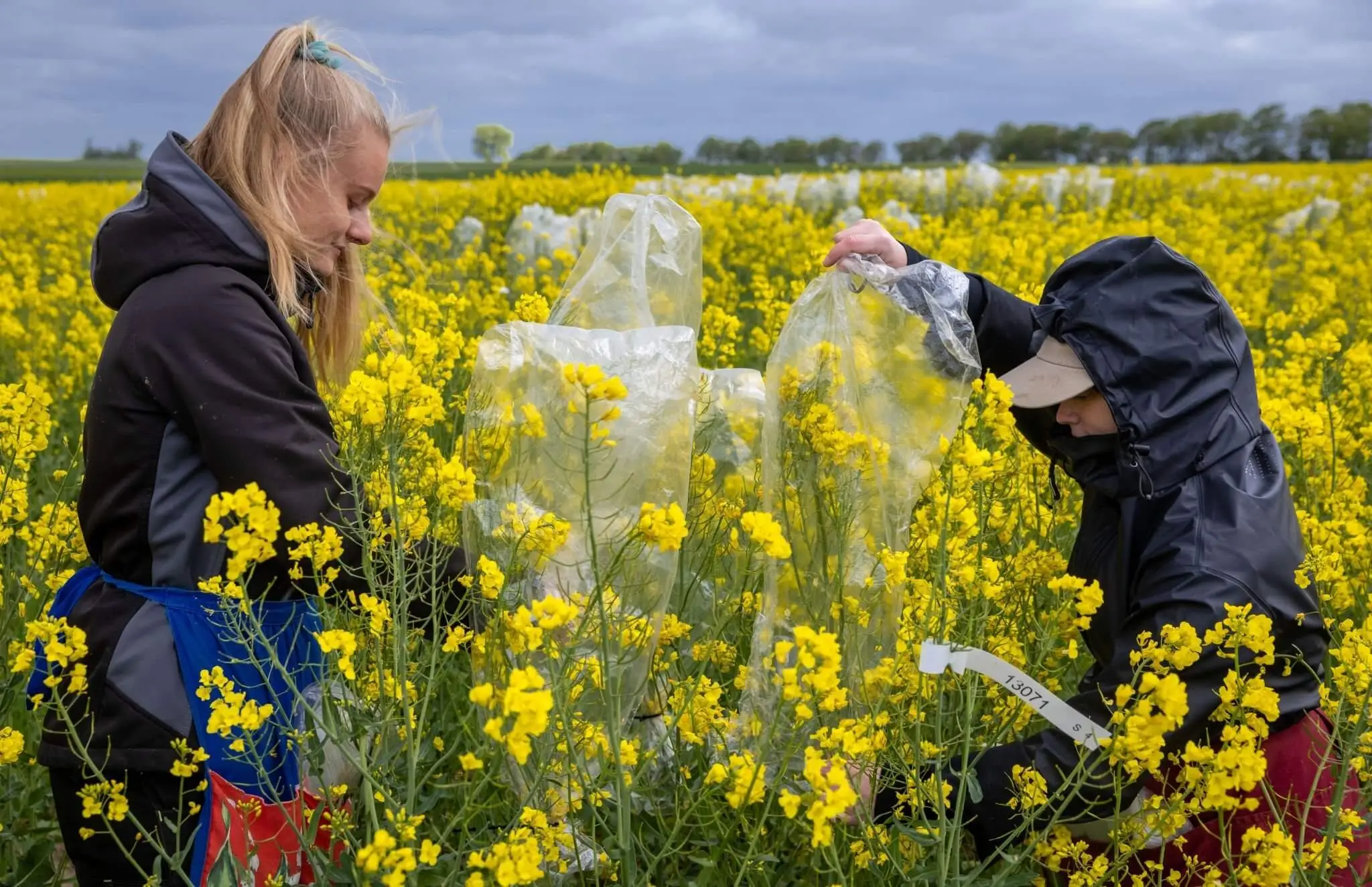
In the vast world of seeds, there exists a remarkable category known as heirloom seeds. These seeds have a rich history and carry the legacy of generations past.
They possess unique traits and flavours, offering a distinct experience for growers and consumers alike. One of the fascinating aspects of heirloom seeds is their journey of cross-pollination, which has shaped their evolution over time.
This article delves into the world of heirloom seeds, exploring their definition, history, the process of cross-pollination, advantages, challenges, techniques for successful cultivation, and the future of these remarkable seeds.
What are Heirloom Seeds?
Definition and Characteristics
Heirloom seeds are open-pollinated varieties that have been passed down through generations, often for over 50 years. These seeds are carefully selected and preserved due to their unique traits, flavors, and adaptability to specific regions. Unlike hybrid seeds, heirloom seeds retain their characteristics through natural pollination, maintaining a stable genetic makeup.
Importance and Preservation
The preservation of heirloom seeds is vital for maintaining genetic diversity in agriculture. They safeguard the biodiversity of plant species, contributing to a resilient ecosystem and ensuring the availability of a wide range of crops.
Furthermore, heirloom seeds often possess superior flavors and qualities, offering a diverse culinary experience that cannot be replicated by mass-produced hybrid varieties.
Read Also: Fast-Growing Delights: Discovering Quick-Growing Vegetable Seeds
The History of Heirloom Seeds
Origin and Early Cultivation
Heirloom seeds have a rich history that dates back centuries. They originated from traditional agricultural practices where farmers carefully selected and saved seeds from the best-performing plants for future plantings.
These seeds were cherished for their desirable traits and handed down from one generation to the next, forming the foundation of agricultural communities.
Decline and Resurgence
With the advent of commercial agriculture and the rise of hybrid seeds, heirloom varieties faced a decline in popularity. The focus shifted towards uniformity, productivity, and long shelf life, often at the expense of flavor and diversity.
However, in recent decades, there has been a resurgence of interest in heirloom seeds. People have recognized the value of preserving these seeds’ genetic diversity and unique characteristics.
Read Also: Starting Strong: Which Vegetable Seeds to Start Indoors
The Process of Cross-Pollination

The Role of Pollinators
Cross-pollination is a crucial aspect of the life cycle of plants, including heirloom varieties. It involves the transfer of pollen from the male reproductive organ (stamen) to the female reproductive organ (pistil).
This process is often facilitated by pollinators such as bees, butterflies, birds, and wind, ensuring genetic diversity and the survival of plant species.
Natural and Artificial Cross-Pollination
Heirloom seeds primarily undergo natural cross-pollination, where wind and pollinators carry pollen from one plant to another.
However, artificial cross-pollination can also be employed by growers to create specific hybrids or improve desirable traits.
This process involves manually transferring pollen between plants, carefully selecting parent plants with desired characteristics.
Read Also: Pre-Planting Prep: Soaking Vegetable Seeds for Optimal Results
Advantages of Heirloom Seeds
Biodiversity and Genetic Diversity
One of the significant advantages of heirloom seeds is their contribution to biodiversity. By preserving and cultivating heirloom varieties, we help maintain the genetic diversity of plant species.
This diversity enhances the resilience of agricultural systems, making them more adaptable to changing environmental conditions and pests.
Unique Flavors and Qualities
Heirloom seeds offer an unparalleled array of flavors and qualities. Each variety possesses its unique taste, texture, and appearance, providing a diverse culinary experience.
From vibrant heirloom tomatoes bursting with juiciness to ancient grains with exceptional nuttiness, heirloom seeds bring an extraordinary depth of flavor to the table.
Adaptability and Resilience
Due to their long history and diverse genetic makeup, heirloom seeds often exhibit remarkable adaptability and resilience. They have adapted to specific climates, soils, and pests over generations, making them well-suited for local and organic farming practices. Their resilience ensures that they can thrive in diverse conditions, contributing to sustainable agriculture.
Read Also: Shedding Light on Germination: Which Vegetable Seeds Need Light?
Challenges in Cultivating Heirloom Seeds

Pollen Contamination and Crossbreeding
One of the challenges faced in heirloom seed cultivation is the risk of pollen contamination and crossbreeding. Heirloom varieties can cross-pollinate with nearby plants, potentially leading to the loss of purity and unique traits. This challenge requires careful planning and isolation techniques to maintain the integrity of heirloom seed lines.
Maintaining Pure Seed Lines
Preserving the purity of heirloom seeds is essential for their long-term viability. As heirloom varieties are open-pollinated, they rely on natural pollination. Growers must take measures to prevent unwanted cross-pollination, ensuring the preservation of pure seed lines for future generations.
Read Also: Maximizing Growth: Do Vegetable Seeds Grow Through Mulch?
Techniques for Successful Cross-Pollination
Isolation and Protection Methods
To maintain the purity of heirloom seeds, growers employ various isolation techniques. These include physical barriers such as row covers, distance spacing between different varieties, and timing plantings to avoid overlapping flowering periods. By protecting plants from unwanted cross-pollination, growers can safeguard the genetic integrity of heirloom seeds.
Hand Pollination and Selection
In some cases, growers may choose to perform hand pollination to control the cross-pollination process. Hand pollination involves manually transferring pollen from one flower to another, carefully selecting parent plants with desired traits. This technique allows growers to create specific hybrids or preserve pure lines, ensuring the continuation of heirloom varieties.
Read Also: Will Heirloom Seeds Reproduce? Unraveling the Mystery of Seed Saving
The Future of Heirloom Seeds
Sustainable Agriculture
Heirloom seeds play a vital role in sustainable agriculture. As the demand for organic and locally adapted crops grows, heirloom varieties offer an ideal choice. By preserving genetic diversity, heirloom seeds contribute to resilient farming systems that are less reliant on synthetic inputs, promote soil health, and foster ecological balance.
Community Seed Banks and Preservation
To ensure the long-term availability of heirloom seeds, community seed banks and preservation efforts have gained prominence. These initiatives involve collecting and storing heirloom varieties, making them accessible to future generations of growers. Community seed banks also serve as repositories of traditional knowledge, promoting seed sovereignty and food security.
- Read Also: Planting Organic Herb Seeds: Enhancing Flavor and Health in Your Garden
- Read Also: Burpee Organic Seeds: Your Go-To for Successful Gardening
- Read Also: Organic Seeds for Hydroponic Gardening: A Green Thumb’s Choice
- Read Also:Discover the Beauty of Heirloom Seeds for Container Gardening
Conclusion
The journey of heirloom seeds is a testament to the interplay of nature and human stewardship. These seeds have traveled through time, carrying the stories of our agricultural heritage. The process of cross-pollination has shaped their evolution, offering us a treasure trove of flavors, adaptability, and biodiversity. By preserving and cultivating heirloom seeds, we contribute to sustainable agriculture and ensure the continuation of these remarkable plants for generations to come.
FAQs
Are heirloom seeds more nutritious than hybrid seeds?
While heirloom seeds often offer exceptional flavors, their nutritional content can vary depending on the specific variety. Nutritional values are influenced by factors such as growing conditions and post-harvest handling rather than seed type alone.
Can I save and replant seeds from hybrid plants?
Saving and replanting seeds from hybrid plants may not yield consistent results. Hybrid seeds are the result of cross-pollination between different parent varieties, and subsequent generations may not exhibit the same desirable traits as the original hybrid.
Are heirloom seeds more expensive than hybrid seeds?
The cost of heirloom seeds can vary depending on availability, demand, and the supplier. While some heirloom seeds may be more expensive than common hybrid varieties, the value lies in their unique characteristics and the preservation of genetic diversity.
Can heirloom seeds be grown in all regions?
Heirloom seeds come in a wide range of varieties, some of which are better adapted to specific regions and climates. It is essential to select heirloom varieties that are suitable for your local growing conditions to maximize success.
How can I support the preservation of heirloom seeds?
You can support the preservation of heirloom seeds by purchasing them from reputable seed companies or joining community seed-saving initiatives. Additionally, learning about heirloom varieties, sharing knowledge, and encouraging local farmers’ markets to offer heirloom produce can contribute to their preservation efforts.
